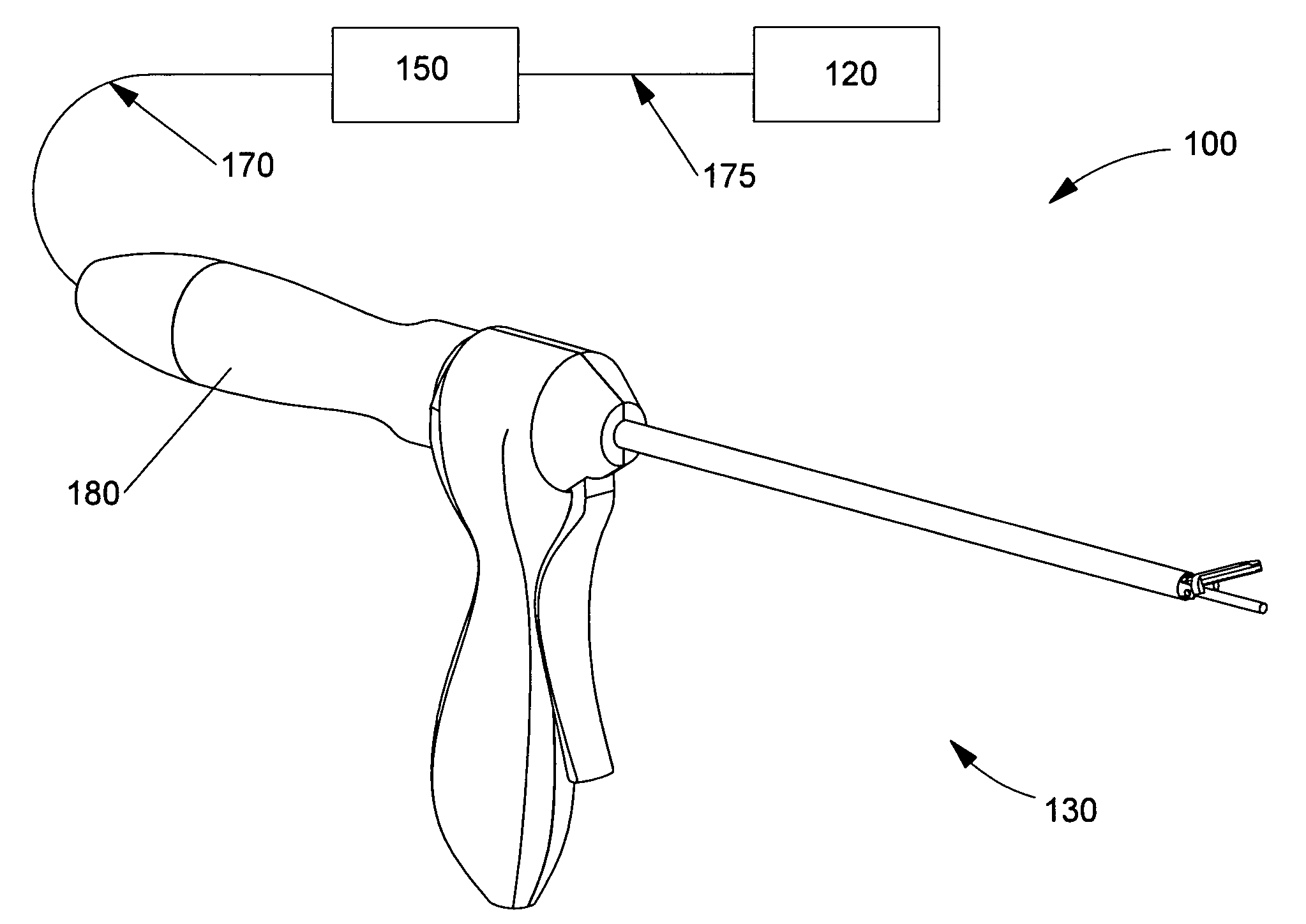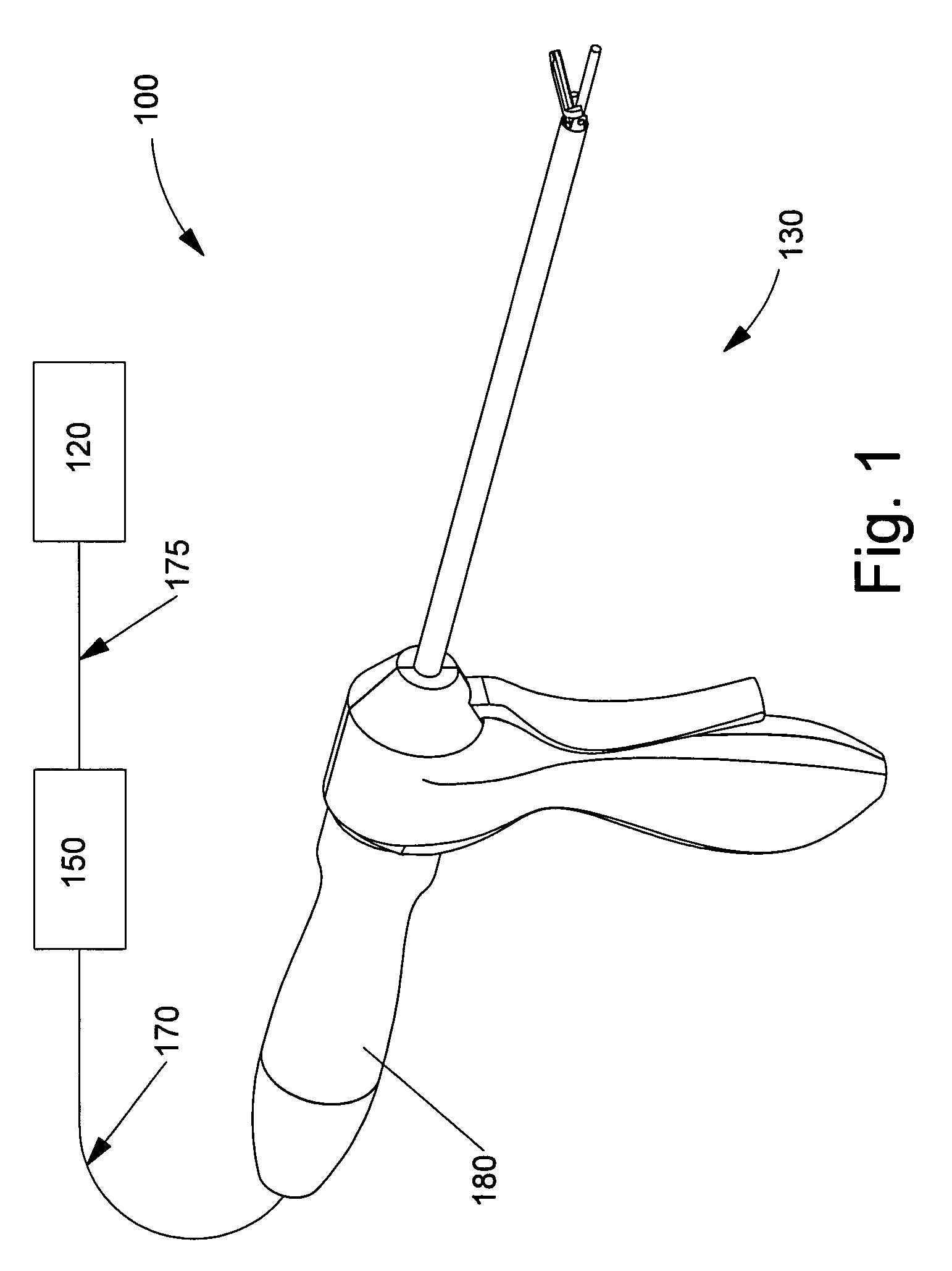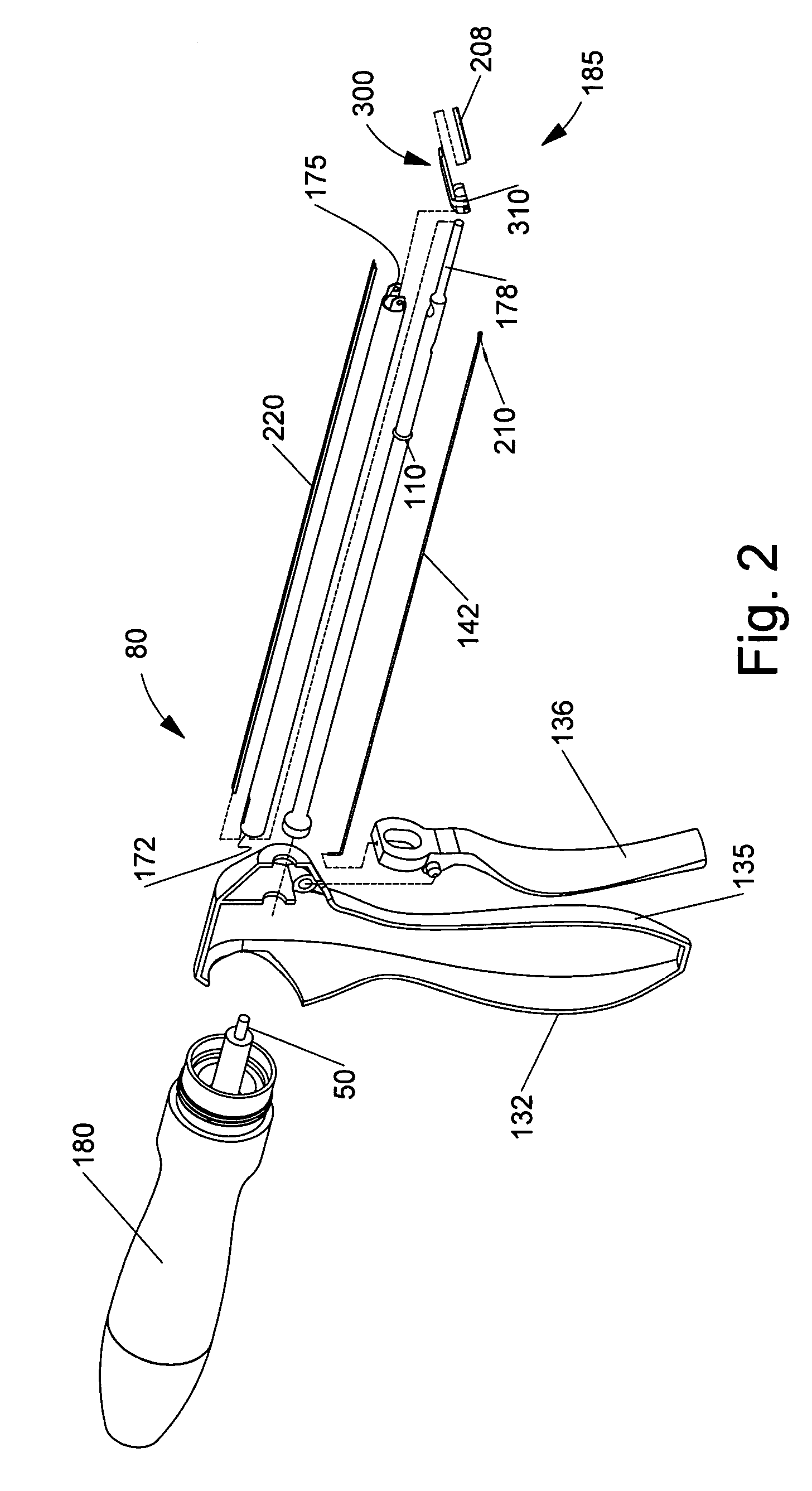Ultrasonic shear with asymmetrical motion
a technology of asymmetric motion and ultrasonic shear, which is applied in the field of ultrasonic devices, can solve the problems of limited ability of single-element end-effector instruments to apply blade-to-tissue pressure, less-than-desired hemostasis and tissue joining, and the use of other ultrasonic surgical instruments
- Summary
- Abstract
- Description
- Claims
- Application Information
AI Technical Summary
Problems solved by technology
Method used
Image
Examples
Embodiment Construction
[0037]In the following description of the illustrated embodiments, references are made to the accompanying drawings, which form a part hereof, and in which is shown by way of illustration various embodiments in which the invention may be practiced. It is to be understood that other embodiments may be utilized, and structural and functional changes may be made without departing from the scope of the present invention.
[0038]In an ultrasonic device running at resonance in longitudinal mode, the longitudinal ultrasonic motion, d, behaves as a simple sinusoid at the resonant frequency as given by:
d=A sin
[0039]where:
[0040]ω=the radian frequency which equals times the cyclic frequency, f; t is time; and A=the zero-to-peak amplitude.
[0041]The longitudinal excursion is defined as the peak-to-peak (p-t-p) amplitude, which is just twice the amplitude of the sine wave or 2A.
[0042]Referring now to FIG. 1, a perspective view of an ultrasonic shear system 100 is illustrated in accordance with embo...
PUM
 Login to View More
Login to View More Abstract
Description
Claims
Application Information
 Login to View More
Login to View More - R&D
- Intellectual Property
- Life Sciences
- Materials
- Tech Scout
- Unparalleled Data Quality
- Higher Quality Content
- 60% Fewer Hallucinations
Browse by: Latest US Patents, China's latest patents, Technical Efficacy Thesaurus, Application Domain, Technology Topic, Popular Technical Reports.
© 2025 PatSnap. All rights reserved.Legal|Privacy policy|Modern Slavery Act Transparency Statement|Sitemap|About US| Contact US: help@patsnap.com



